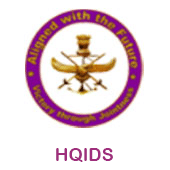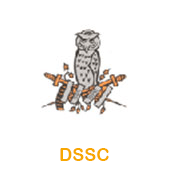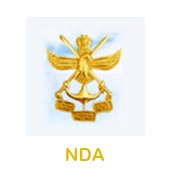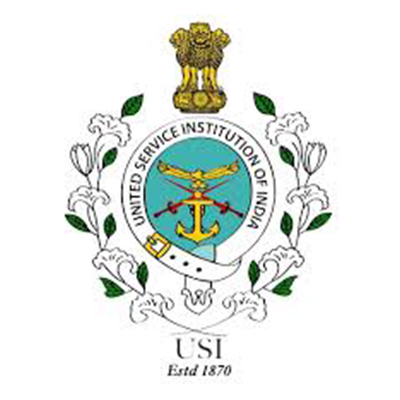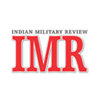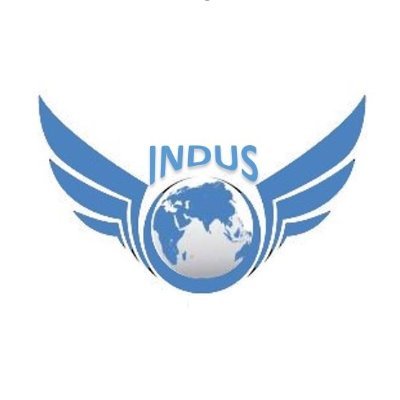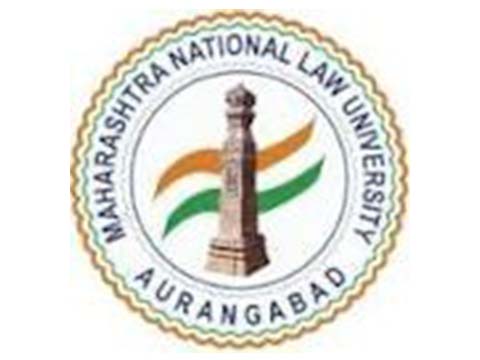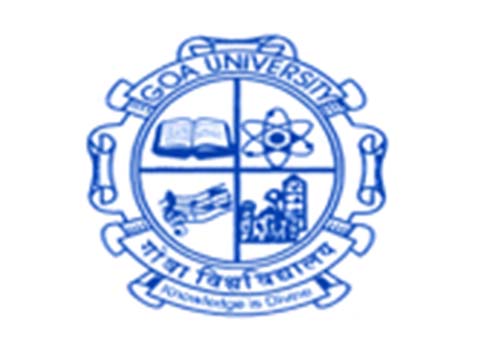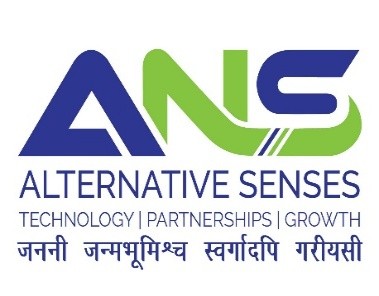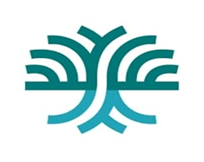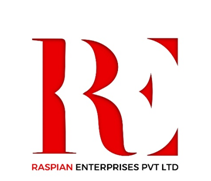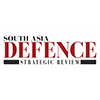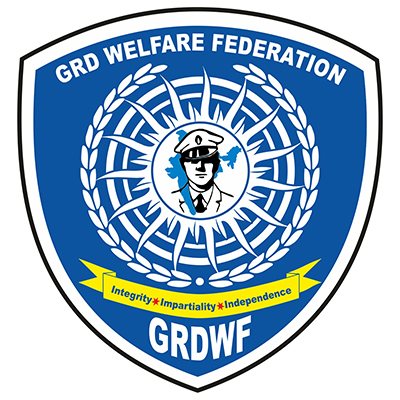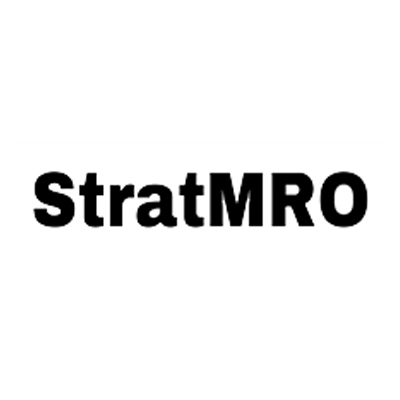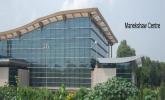
Seminar | 23-Sep-2015
Seminar | 21-22 Jan 2015
Feedback of Seminar on Night Vision India 2015
Feedback of Seminar on Night Vision India 2015 ON 21-22 Jan 2015 at Manekshaw Centre
The Conference cum Exhibition ‘Night Vision India 2015’ was organized by Centre for Joint Warfare Studies (CENTJOWS) in technical collaboration with Indian Military Review (IMR) and with PHD as the supporting Industry Association. It was conducted from 21-22 Jan 2015 at the Manekshaw Centre, Delhi Cantt.
The inaugural session had the following speakers between 0930-1045h:-
- Maj Gen KB Kapoor, VSM (Retd), Director CENTJOWS.
- Lt Gen GS Katoch, AVSM, VSM Director General Perspective Planning.
- Lt Gen Sanjay Kulkarni, AVSM, SC,SM, VSM, Director General Infantry.
- Shri RS Bedi, Member Defence Committee PHD Chamber of Commerce.
Welcome Address
Maj Gen KB Kapoor, VSM (Retd), Director CENTJOWS delivered the welcome address. He stressed the need for Night Vision capability while stating that the quantum of requirement was colossal. The requirements would encompass the entire spectrum of conflict management. BSF and PMF on the IB would keep an effective check on cross border infiltration, while the IAF and Navy would require for their tasks including detection and prosecution of the threat detected. The Indian Army would require it for armour, infantry, artillery, engineers etc.
He also elaborated on the requirement of the integration of the same to the C4ISR, wherein digital inputs by one agency are shared real time across multiple agencies and HQs horizontally and vertically thereby helping in detection, identification, decision making, targeting and Post strike assessment of the threat.
The acquiring of technologies is not recommended since Transfer of Technology, unless integrated down to the level III vendors, results in inadequate absorption of ToT. The in house development of technology route, with import of critical sub components is a recommended route, although the approach would be on case to case basis, based on level of expertise already available and cannot be universally mandated. Since the scope is multi disciplinary and multi user the fusion should be fully carried out between the users, DRDO and the industry.
Inaugural Address
Lt Gen GS Katoch, AVSM, VSM, Director General Perspective Planning delivered the Inaugural Address. He set the tone and tenor of the entire conference by deliberating of critical subject.
He emphasized the critical importance of the battlefield transparency enabler which is a battle winning factor today. With the conventional short wars as the most likely form of war, the 24hour battle will be a necessity forcing systems to be all weather. Operational parameters will not be hindered by the lack of visibility by night or due to low day time visibility. Since the tempo of operations will be fast the asymmetry advantage offered by the better night vision capability, seamlessly integrated across the battlefield, will tilt the result of the war.
He desired to see the DRDO carrying out joint venture for bringing in critical technology and synergizing with the users and producers. The producers should enhance their production capacities.
Theme Address
The theme address was delivered by Lt Gen Sanjay Kulkarni, AVSM, SC, SM, VSM, Director General Infantry. He mentioned that the level of night vision or night blindness results in the evolution of war fighting methods or Standard Operating procedure in various situations like LC posture, Counter terrorist operations, conventional war etc. Our drills mould the methods of our dealing with situations.
He opined that the gap between the current situation and the desired level is vast and that we need to reorient to the world market. He however agreed that at any point of time some forces will be equipped with older technologies while strike forces and other key components will be kitted with night sights of niche technology.
Industry Perspective
The Industry Perspective was put forth eloquently by Mr RS Bedi, Member Defence Committee PHD Chamber of Commerce. He stated that the night vision devices with all forces should be of generation 3 or 4. He stressed that Indian SME are holding great promise for the future. He mentioned a large number of capacity addition points for the Indian situation like multi utilization ability of power packs, modular designs, reduction in size and weight, increase in ruggedness, lower power consumption, higher sensitivity etc.
He recommended that night vision ability should be switchable from one to another eg II to IR or vice versa.
SESSION-2
Emerging Technologies in NVD
This session was held on 21 Jan 2015. The session was directed towards highlighting the emerging trends in the Night vision technologies, and to this end the session included representatives of the Industry and DRDO to identify such trends.
Electro-Optics systems form the mainstay of the modern day battlefield. While significant advances have been made in consumer imaging systems, military electro-optic systems still continue to follow the single aperture principle and place the full burden for image formation on physical optics. In order to overcome this the industry proposed the concept of computational imaging and balances front end analog wave front processing with post-detection digital computation to build small form factor, low power electro optic systems.
While emphasising the requirement of Night Vision Devices for employment at the borders be it land, sea or air, the industry emphasised the need of wide area surveillance. The relevance of Infra red was highlighted and how it could be effectively used for wide area surveillance. The industry brought out the evolution of traditional imagery which included better optics, smaller pitch, higher sensitivity and better resolution. It was further brought out that in order to ensure better clarity of the picture taken by such devices, there was a requirement of video stabilisation so that the pictures could be clear even while taken under unstabilised conditions. A parallel was even drawn with regard to pictures taken by the mobile devices which had a mechanism to take high resolution pictures even if the camera was not optimally stabilised. In order to ensure the clarity of images taken, the industry proposed using of micro lens array wherein a number of lenses were used for imagery and then the image would be stitched for better resolution. This was more applicable in areas with adverse weather conditions. Another concept proposed by the industry was the use of multi sensor fusion which involved real time fusion of long wavelength and visible imagery wave lengths to get the best of both.
With regard to leveraging commercial electronic ecosystem, the industry brought out that that their cameras ran on androids in order to have user interface, device security implying that the same could be locked by using bio-metrics and having raw computing power. It was brought out that as the time for procurement post issue of Request for Proposal (RFP) to procurement of the device could at times be 3-4 yrs, it is important that the equipment should have the capability of upgradation.
The industry representatives further brought out that Size, Weight and Power ratio (SWAP) was important to ensure that the equipment has low blurring, better stabilisation, and lower requirement of power as this would yield better results as also enable a soldier to effectively carry the equipment with lesser weight requirement of power pack.
SESSION-3
The session on “Combat by Night” was chaired by Maj Gen KK Sinha, SM, ADG Infantry. The speakers highlighted the following as given in succeeding paras.
Historical perspective followed by the current capability of own Mech Forces capability in night operations which he stated was a few years behind the US.
20. All AFV’s are likely to be night enabled by 2018.
21. Need for Night Enabling:-
(a) 24×7 ops.
(b) No difference between day & night tempo of operations.
- Mechanised operations more critical to prog at night.
- Hunter- Killer concept (Cdr & Gnr).(Fast tech changes).
22. What we have. Mix of current & obsolete tech
What We Want. Improved DRI rgs, improved image quality, reduction of size, wt, power, cost, reliable (high MTBF, low MTTR), “soldier proof”, low pitch, high resolution, high sensitivity, low power, modularity (replacibility, reparability), long life, trainability.
24. Different Requirements:-
(a) Cdr. Iden tgts at long rgs & all rd sit awareness.
- Gnr. Details to iden tgt at op rgs.
(b) Dvr. See surroundings.
25. Challenges:-
(c) Availability of critical tech.
- Long procurement periods.
(d) Seamless integration of tech.
- Involvement of indigenous tech.
- In situ installation.
(f) Tech threshold of users.
26. Imperatives: Techno Integration.
(a) Joint ventures for tech transfers & upgrades.
- Transfer of tech.
(b) Devp of infra & vendor base.
- Strong R& D for infra & vendor base.
- Trg- smls & live eqpt.
(c) Optimum QA/QC.
27. The offr stressed on the following pts as given in succeeding paras:
(a) Future Battle Field Envt. Intense, ast, day/ni ops in all dimensions.
(b) Challenges. IFF.
- Op Imperatives. Conventional & sub conventional ops to incl all trn mob, high assurance of survival, lt wt, ni enabled, sit awareness, std of eqpt, enhanced reach & rg, retain basic character of inf.
(a) Modernisation Domains. Sit awareness wrt lethality, survivability, mobility, sustainability. Sit awareness to incl svl eqpt, comd,cont & comn, navigation.
28.Concept of Ni Enablement Multifunction sights to incl:-
(a) day/night camera.
(b) LRF.
- Digital magnetic Compass.
- GPS.
(c) UGS.
29. The Way Ahead:-
(a) Procurement to ensure state of art tech.
(b) Private sector participation.
(c) Concept of L1 versus Q1.
30. The speaker emphasis on the following as given in succeeding paras.
Current Capb. The current capb incl:- BFSR’s Heptr Mtd Svl Sys, WLRs, UAVs, Elec warfare eqpt, Air Force (PR msns, SAR msns_ need to reduce download time)
32 Future Capb Development.
(a) Bn/Bde Level – Mini UAVs, Multi sensor recce & svl sys.
- Div/Corps – UAVs,WLRs,Aerostats
- Comd – satls, UCAVs(unmanned combat ae vehs).EW heptrs,
The offr stressed on mainly the historical perspective as also the following as given in succeeding paras.Ni Vision. The ability to see in low lt conditions. Ni vision today comprises of II,Active Ill, TI. This is imp in view of the need for rd the clock air ops. Prerequisites of Ni Ops. These incl:- see instruments, know altitude, navigate, take off/land, shoot en ac/grnd tgts.
SESSION-4
Night Air Combat and Support Operations.
Night Air Combat and Support Operations was chaired by Dr S Sundaram, DG Electronics and Comn Systems, HQ DRDO.
In his opening remarks, Dr Sundaram stated that Short Range IR provided image magnification, better resolution improved range and easier recognition. The Figure of merit of NV systems of about 900 or 1400 was optimal for poor light conditions and about 1700 in pitch dark conditions. Ranges varied from 1 km to 33 km. Uncooled systems could detect tanks upto ranges of 3 km, for longer ranges cooled systems were desirable. Medium ranges were obtained in humid environments.
The first speaker Yaakov (Kobi) Zaushnizer of SCD Israel gave an industry presentation. He stated that high sensitive VOx and InGaAs detectors were cost effective solutions for homeland security, situational awareness and TWS. The InGaAs.
detectors operated in the 1u wavelength and were suitable for near range applications. The SW infrared and MW infrared in the 3.5u wavelength were optimal for InSb, epiInSb and XBn InAsbs detectors. Similarly the HgCde Te, Type 2 superlattice and VOx detectors were used in the LW IR band (8-13u). He opined that in uncooled night vision devices, the two technologies i.e. VOx and InGaAs were the best solution for military requirements. The detector with a signal processing algorithm provided good quality images. The equipment was small in size with high sensitivity. It could be integrated with aircraft landing systems, missile seekers and NV sights. It’s Tec-lon operations with low SWAP, shutter less operations consumed less power. The equipment could withstand rifle recoil and shock upto 750G (?).
The Thermal Vision Sensor (TVS) was another enhanced vision system that found use in aircraft (manned & unmanned) for safe taxiing, take off and landing. The single core VOx detector is used in all TVS Systems including for shooters, snipers and heavy guns.
The SWIR system with InGaAs based detectors were suitable for use during haze and fog conditions. The cameras had a 350/sec frame rate and data link. They were presently integrated into two dimensional range finders for tanks and fire control systems.
In concluding, he compared FLIR thermal imager with SWIR (where a port was detected at 22.5km and a small ship at 14.1 km).
The second speaker of the session was AVM Bharat Kumar, PVSM, AVSM (Retd) who spoke on IAF Night Operations. AVM Kumar is a former fighter pilot, AOC HQ MAO and AOC-in-C, Southern Air Command. He retired in 1997 and is presently aerospace editor for Indian Military Review.
In his talk, AVM Kumar defined night vision as the ability to see in low light conditions, and that it was dependent upon the sufficient spectral range and adequate intensity range of light. Broadly night vision technologies included image intensification, active illumination and thermal imaging. Night vision capability was necessary to exploit air power to its full potential, i.e conducting offensive and defensive operations round the clock. Broadly strategic bombing, interdiction, close air support and Air to Air Combat need to be carried out day and night. Therefore, aircraft must be able to take off, land, fly, navigate and engage aerial and ground targets in periods of darkness.
The speaker then went on to narrate the development of night capability in the IAF. He stated that landing systems had grown from flare paths on runways such as VASI, the GCA and the ILS, Cat I (RVR 560m), Cat II (RVR 370m), Cat IIIa (RVR 210m) and Cat IIIb (RVR 48m). He added that very soon the ground based Augmentation system GAGAN would be operational and this would facilitate landing in poor visibility conditions at many IAF airfields.
AVM Kumar walked the audience through the growth of night capability in the IAF in engaging aerial targets from the acquisition of Vampire night fighter and the paradigm shift in night fighting capability with the induction of M1G2ls. In navigation the shift from reading maps to inertial nav systems. GPS, radio & laser altimeters and terrain mapping and following radar. The IAF had no night capability for air to ground engagements till the acquisition of the Canberra aircraft. He mentioned the restrictions in the Blue Study System and the innovative methods employed during the 1971 operations. AVM Kumar concluded by stating the IAF today had a significant and credible night operation capability.
The final speaker of Session 4 was Mr Nir Baran of Controp, Israel. Mr Nir introduced his company Controp, established in 1988 owned by Rafael and Aeronautics. The company manufactures TI cameras and electro optical gyro stabilized systems for defense and homeland security. He stated that the company’s products could detect standard targets (ie human and MBTs) 600m & 1800m with TI Cameras and identify them 100m & 300m. Similarly day cameras could detect the targets at 1000m & 3000m and identify them at 180 & 500m. He also displayed the technical characteristics of IR and Day TV sensors.
He gave a brief industry presentation on Thermal Imaging Cameras. He stated that broadly these were two windows of 3-5u & 8-13u for exploitation by TI devices. He introduced his company’s two systems that were, as stated, an excellent product viz, FOX, a cooled device operating in the 3-5u range and the CAT, an uncooled device in the 8-13u range. This 3rdgeneration cooled device used InSb detector whose optical zoom lenses had upto X36 magnification and focal length from 20-1400mm. Mr Nir described the SPEED – LR a gyro stabilized electro-optical system that incorporated TI and color CCD cameras, LRF and laser pointer. The system provided a range of upto 15km for man detection using its TI Camera.
- The speaker also described the STAMP family of gyro stabilized NV devices ranging from 300gm to 3kg for airborne application especially for UAVs.
- The Session concluded with a few questions relating to the equipment. The Chairman thanks the speakers on an excellent presentation.
Countering the Threat
The final session on “Countering the Threats” was chaired by Lt Gen VK Saxena, AVSM, VSM, DG AAD. The General officer in his opening remarks, emphasized on the emerging threat scenarios & measures to counter them. He was of the firm conviction that there is a ‘shield’ for every type of attack which is being developed.
The first speaker, Capt (IN) Alok Anand, Director Naval Operations at HQ IDS spoke on the “Maritime Operations at Night”. The officer elucidated on the requirements for ship borne, air borne and special operations being conducted by the Indian Navy. He spoke on the type of maritime operations being undertaken by Indian Navy, the challenges being faced, the type of submarine operations and air operations.
The speaker thereafter brought out the challenges pertaining to night operations i.e. detection, identification and poor visibility. The officer highlighted the concept of operations, existing night fighting capabilities, limitations and futuristic requirements for ship borne, air borne and special operations for the Indian Navy. The limitations revolved around, the exiting capabilities not being fully operational, vintage technology, lower ranges of equipment, poor performance and heavy/cumbersome equipment. The officer consequently brought out desired requirements for:-
(a) Ship Borne requirement:-
(i) Infrared Search & Track (IRST).
(ii) Fixed night vision sight.
(iii) Portable night vision binoculars cum lazer range finders.
(iv)Helmet mounted night vision sights.
(b) Air Borne requirements:-
(i) Night vision sight (gen 3 technology).
(ii) Improvised night vision goggles (NVG) (gen3+).
(iii) NVG compatible deck lighting.
(iv) New generation helmet mounted devices.
(v) IR recce pods.
(d) Special Operations:-
(i) Image Intensifier 4th generation sight
(ii) Enhanced NVG.
(iii) Enhanced NVG (Digital).
(iv) Auto Gating Technology.
(v) Panoramic Vision NVD
The next speaker on the panel, Sh Rajeev Krishna, IG Operations BSF, spoke on the “Enhanced Night Time Border Surveillance”. The speaker alluded on the challenges and special surveillance requirements for our vast borders. He brought that our borders with Pakistan and Bangladesh were 2289 km and 4096 km respectively. He further brought that inter border crimes/violations occurred mainly during night i.e. 70-80 %.
Emphasizing on the need for night time surveillance, he brought out the problems were compounded due to difficult terrain, similar demography pattern, adverse weather, cross border firing, infiltration and human & vehicular movement near border areas. He accordingly stressed on the need for having an “Integrated Border Management System”. The IG was of the view that although, a host of technology was currently available with the BSF, however, there is a need for improving visibility through thick foliage, standardization of equipment, enhancing the interoperability of equipment and making it more user friendly, need for economizing on costs and focusing on Make in India policy.
The last speaker on the panel, Brig TPS Rawat, SM*, DDG Engineer in Chief Branch, IHQ of MOD(Army) spoke on the Camouflage & Concealment against Night Vision Capable Platforms.” The officer in his introductory remarks highlighted on the changing threats post Gulf War and evolution of NVDs/sensor technology. He brought that the camouflage (camo) challenges mainly pertain to multi spectral sensors and IR signatures of aircrafts/ships/vehicles/troops. In order to address these challenges, he brought out that the counter measures should address the “Visible & Infrared Spectrum”.
The speaker thereafter, updated the audience on the usage and current status of various projects under development/procurement stage for the Indian Army. Some of the important ones being:-
(a) Synthetic Camo Nets
- Camouflage Solution against UV threat.
- Multi Spectral Camo Nets (MSCN) for critical equipments/A vehicles.
(b) Multi Spectral Personal Camo Equipment i.e. PCGS, Ponchos and personal screen.Mobile Camo System (MCS) for moving equipment.
(c) Smoke screen
Infrared Reflectant & Multi Spectral Camo Paints
(d) Low emissive coating.
He thereafter concluded giving out the future trends in Camo and Concealment technology, mainly
(a) Light weight Camo Systems
(b) Thermal Blankets.
(c) Use of Liquid Nitrogen, Meta material and Nano technology
(d) Stealth and Plasma stealth technology
(e) Invisible equipment/deceiving technology using e camo and adaptive camo.
59. The chairperson finally summarized by giving a small presentation on “Art of Invisibility & Counter Thereto” during which he stressed on the emerging stealth and counter stealth technologies. He alluded on the development in counter stealth measures such as Monostatic to Multistatic Radars using X, L and VHF bands, Passive Sensing using Mimo radar signal, exploitation of laser technology and Schlieren photography. He concluded by bringing out the advancements made by the Russians and the Chinese in Anti Stealth Radars ie Over the Horizon Technology (OTH), Multiple Input & Output radars, Celldar Radars and IR detection.
Valedictory Address
60. Lt Gen Ashok Mehta, AVSM, VSM (Retd) the former Commandant Armoured Corps Centre and School after successful conclusion of all sessions in the seminar delivered the valedictory address. He commenced his talk after generally defining the un-predictable nature of threat which has besides being in realm of irregular/ sub conventional regime is fought invisible environment. This calls for changes in fighting organization as well as in strategy. Despite un-predictable nature of threat, the adversary resorting to the conventional war cannot be rule out. Night Vision devices are the enabler of the future wars whether these are fought in sub- conventional or conventional realm. Yet it is wrong to say that NVD are new. Earlier these had woefully small ranges which over the period have extended beyond imagination and are constantly improving. This ideally it calls for frequent upgrades but, high costs of upgrades is to be kept in mind and also consider that lot will also depend the fighting strategy. At the same time NVD’s are necessary and not merely force multipliers.

